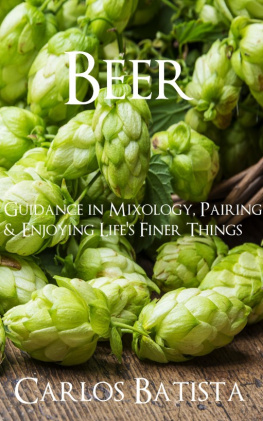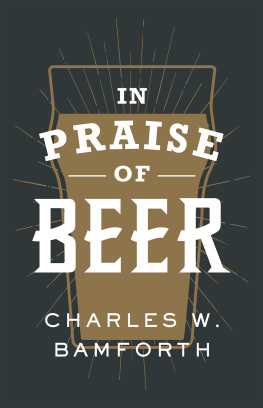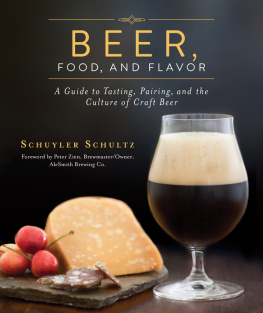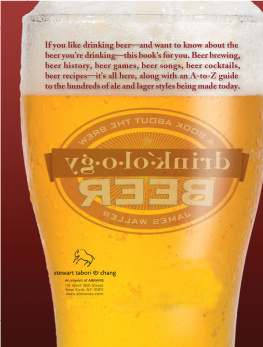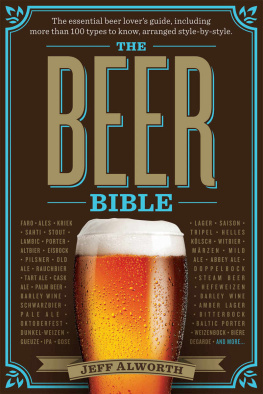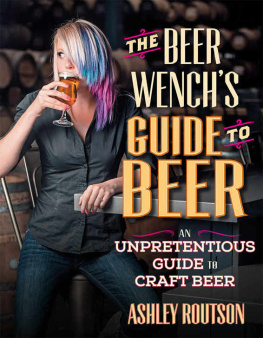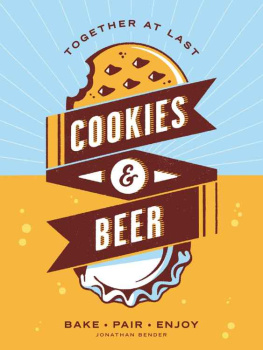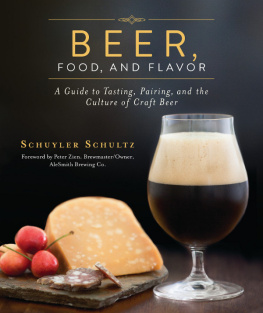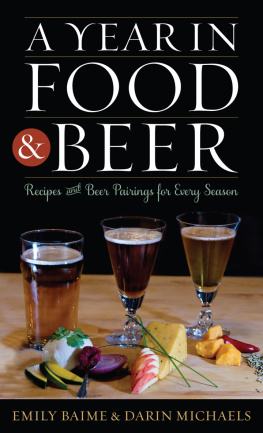Beer
Guidance in Mixology, Pairing & EnjoyingLifes Finer Things
Published by Carlos Batista at Smashwords
Copyright 2014 Carlos Batista
ISBN: 9781310568251
Smashwords Edition, License Notes.
This eBook is licensed for your personalenjoyment only. This eBook may not be re-sold or given away toother people. If you would like to share this book with anotherperson, please purchase an additional copy for each recipient. Ifyou're reading this book and did not purchase it, or it was notpurchased for your use only, then please return to Smashwords.comand purchase your own copy. Thank you for respecting the hard workof this author.
If you enjoyed this book, please return to Smashwords.com to discoverother works by this author.
Thank you for your support.
Preface
There a multitude of books on beer. Whychoose this one? Easy. We tell you more information about beer thanyou would want to know. More of a reference guide in production,flavors and service techniques than any other you may find. Hereyoull learn how to tap a keg and even better, how to pair beerwith food. For too long people have only thought of wine whencomplimenting a meal with a beverage. But this notable beveragedeserves consideration of its own. We recommend specifically whattypes of beer will go great with specific types of cuisine. Whoelse does that? Become an expert on beer and be able to recommendto others or simply enjoy on your own. Now sit back, relax and pouryourself a cold one, while enjoying this work.
Beer is indeed one of the finer things inlife all should enjoy!
Table of Contents
- Beer
Chapter 2 - Origins
- Production
- Types
- Measurements
- Serving & Packaging
- Draft Beer Service
- Flavor, Aroma & TextureCharacteristics
- Beer & Food Pairings
- Definitions
Chapter 1 Beer
Beer is the most consumed alcoholic beverage in the world.After water and tea, it is the third most popular drink worldwide.It is most likely the oldest fermented drink still in existence. Itis made via the saccharification of starch and by fermenting thesugar that results, yielding alcohol [beer].
Malted cereal grains, usually barley and wheat,produce the starch and saccharification of the enzymes. Rice andun-malted maize are also commonly used to lighten the flavorbecause they are less expensive. The production of beer is referredto as brewing. Beer is typically flavored using hops. This addssome bitterness and acts as a natural preservative althoughflavoring with herbs and fruit may also be done.
The production and distribution of beer is referredto in some of the oldest known writings. For example, HammurabisCode dating back to about 1772 B.C. includes laws related to beerand beer parlors. Additionally, The Hymn to Ninkasi, which is aprayer to the Mesopotamian goddess of beer, functioned both as aprayer and a method of remembering the recipe for beer in a timewhen few were literate. Today, brewing is a booming businessworldwide and is made up of several multinational companies andthousands of smaller local brewpubs and breweries.
Beers strength is typically about4-6% alcohol by volume (ABV), though it can vary between 0.5% and20%. Some breweries have achieved beers of 40% ABV and above in recent times.
Legal Definitions U.S. &European Union
UnitedStates
TITLE 27--Alcohol, TobaccoProducts and Firearms
CHAPTER I--ALCOHOL ANDTOBACCO TAX AND TRADE BUREAU, DEPARTMENT OF THETREASURY
SUBCHAPTER B25.15Standards for Beer
(a) Beer must be brewed from malt or fromsubstitutes for malt. Only rice, grain of any kind, bran, glucose,sugar, and molasses are substitutes for malt. In addition, you mayalso use the following materials as adjuncts in fermenting beer:honey, fruit, fruit juicefruit concentrate, herbs, spices,and other food materials.
(b) You may use flavors and other non-beverageingredients containing alcohol in producing beer. Flavors and othernon-beverage ingredients containing alcohol may contributeno more than 49% of the overall alcohol content of thefinished beer. For example, a finished beer that contains 5.0%alcohol by volume must derive a minimum of 2.55% alcohol by volumefrom the fermentation of ingredients at the brewery and may derivenot more than 2.45% alcohol by volume from the addition of flavorsand other non-beverage ingredients containing alcohol. Inthe case of beer with an alcohol content of more than 6% byvolume, no more than 1.5% of the volume of the beer may consist ofalcohol derived from added flavors and other non-beverageingredients containing alcohol.
German Beer Purity Law-Reinheitsgebot 1516
"We, with the council, decree that from henceforthin the Duchy of Bavaria, including the land, cities and marketswhich have no special edicts, from Michaeli (29th of September)through Georgi (23rd of April) one Mass [a measured portion] or oneKopf [head] of beer should be sold for not more than one Munichpenny, and from Georgi to Michaeli, the portion should not be morethan two pennies of the same currency, the head for not more thanthree Heller (usually one half a penny), under threat of penaltieswritten below.
If a non-Mrzen beer is sold, it should not be formore than one penny per portion. We especially want to declare thatfrom now on in all our cities, markets and in the countryside, noother things besides barley, hops and water should be used in anybeer.
He who knowingly breaks this law, shall be punishedby the court by having the barrel(s) removed from his possession,uncompensated.
If an innkeeper, however, purchases one, two or three pails(approximately 60 liters) from a brewery in our cities, markets orcountryside, and resells it to the regular citizenry, then he andno one else shall be allowed to charge one Heller more for aportion or head of beer than is decreed above.
Also we, as our country's sovereign shall be allowedto order changes to this law, in case shortages or price increasesof grain create hardship for certain areas or at certain times ofthe year."
Origin of thelaw
William IV, the Duke of Bavaria, adopted the Reinheitsgebot orGerman Beer Purity Law, in 1516. This is possibly the oldestregulation of food quality still in use today. According to theregulation, the only ingredients permitted in beer are hops, waterand barley-malt. Yeast was later added as an allowable ingredient.As at the time of inception, they were not aware of the science andneed of yeast to create fermentation for beerproduction.
The law effectively kept out beers from othercountries that did not comply with the terms, (some brewerssubstitute rice, maize, sorghum, or other raw cereal for barley andfruit juices or molasses in other countries beer production). Inmore recent times, the law was determined protectionism as itcreated trade barriers not allowed with the formation of theEuropean Union. The regulation has now been repealed, but someproducers still follow the guidelines for their beerproduction.
Most likely the origins of beer can be traced backto accidental rather than purposeful designs. Cereal grains containnatural starches that are converted to sugars when baked andstored. Ancient civilizations realized that grains baked with waterand left out would produce an uplifting feeling after beingconsumed.
Today, as in ancient times, wild yeast can be foundfloating in the air. When the sugars inside cereal grains werecombined with airborne yeasts by accident, fermentation began andthe result was a rudimentary form of beer. These beers were oftenthick and more like a gruel than a beverage. Drinking straws wereused to avoid the bitter solids left over from fermentation. Asdifferent cultures throughout the world independently developed thecultivation of cereal crops, beer production soon followed.

